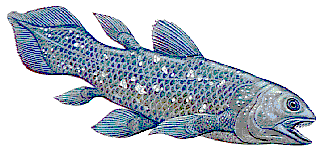
de
Cryptozoologie

 |
de Cryptozoologie |
 |
La méduse noire géante
(Chrysaora achlyos Martin, Gershwin, Burnett,
Cargo & Bloom 1997)
(dernière mise à jour : 01 octobre 2017)
![]()
(en construction)
Zoologie
Phylum : Cnidaria (Cnidaires)
Classe : Scyphozoa (scyphozoaires)
Ordre : Semaeostomeae
Famille : Pelagiidae
Nom commun : méduse noire géante
Nom scientifique : Chrysaora achlyos
Description :
...The black sea nettle can be quite massive, with a bell diameter potentially up to 1 meter and oral arms extending to 5 or 6 meters. The bell color is a distinctive opaque dark purple to nearly black
Historique de la découverte
Bien qu'elle n'ait été décrite scientifiquement qu'en 1997 sous le nom de Chrysaora achlyos, cette méduse géante avait déjà été non seulement observée, mais même photographiée des décennies avant sa "découverte" !
C'est ainsi qu'on reconnaît cette espèce dans un article sur les méduses de William Crowder, publié dans le National Geographic en 1926 (figure 1).
Figure 1 : la méduse noire géante, photographiée 71 ans avant sa description scientifique
(tiré de Crowder 1926)
Figure 2 : la méduse noire géante Chrysaora achlyos
(photo : Howard Hall Productions)
Bibliographie
CROWDER, William
1926 The life of the moon-jelly. National Geographic, 50 [n° 2] : 187-202 (August).HALSTEAD, Bruce W. 1965.
1965 Poisonous and venomous marine animals of the World. Wasington, Government Printing Office, 1 : 994, plate43.MARTIN, Joel W., Lias-Ann GERSHWIN, Joseph W. BURNETT, David G. CARGO, and David A. BLOOM
1997 Chrysaora achlyos, a remarkable new species of scyphozoan from the Eastern Pacific. Biological Bulletin, 193 [n° 1] : 8-13 (August).MARTIN, Joel W., and Hans G. KUCK
1991 Faunal associates of an undescribed species of Chrysaora (Cnidaria, Schyphozoa) in the Southern California Bight, with notes on unusual occurrences of other warm water species in the area. Bulletin of the Southern California Academy of Sciences, 90 [n° 3] : 89-101.